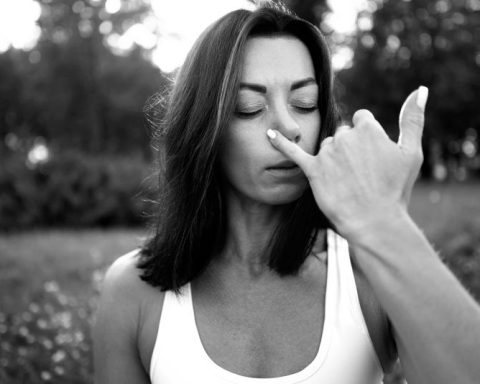Anxiety is a feeling of worry, nervousness, and uneasiness. It is a normal emotional reaction to stressful events such as before taking a test, encountering difficult issues at work, and having a fight with other people. The anxiety may facilitate you to grow towards better performance and alert you to potential danger if any.
However, for people with anxiety disorders, it can be overwhelming since they experience it constantly and it interferes with their daily activities.
In dealing with anxiety disorders, research suggests that grounding techniques can help people detach from anxiety. Although this technique does not solve the underlying cause of anxiety attacks, it can provide a temporary, symptomatic solution.
To help you familiarize yourself with grounding techniques, this article will help you understand the concept and mechanisms of some of the most common coping strategies.
What are grounding techniques?
Grounding, a concept proposed by Lowen (1958/1979), expresses a stable physical and emotional presence by the support of the ground (i.e. the sense of having “feet on the ground”). The term “grounding” is used since, according to Lowen, when people stand on the ground, their muscles are relaxed. This position allows an energetic flow within the body and discharges it into the ground.
While it can be seen that grounding is associated with connecting the physical body to the ground based on the above description, it can also be interpreted as being in tune with body awareness (i.e., “in touch with reality”).
How grounding works?
Grounding techniques pull you away from negative or challenging emotions by anchoring you in your current situation. The mechanism of using the body in grounding one’s thoughts and emotions is made possible by the interconnection between body and mind.
Studies in cognitive science have shown that the body can influence one’s control over cognitive processes by conveying psychological states after receiving stimulation from physical actions.
For that reason, grounding techniques involve all of the five senses including sight, hearing, and smell to distract you from the disturbing thoughts and feelings that cause the anxiety attack. It will interrupt your body’s response during panic attacks and bring you back to the present.
From this mechanism, it can be seen that grounding techniques and mindfulness are quite similar. While mindfulness refers to paying attention to what is happening right now without any judgment, grounding helps people guide their attention toward present safety.
Grounding techniques for anxiety
Since anxiety attacks can happen anytime and anywhere, it is important to know how to ground yourself in those situations. If changing your perception of the situation is difficult or if you feel like you are losing control over your emotions, you may want to focus on your body first. You may do so either by involving your five senses and/or breathing exercises.
5 4 3 2 1 grounding techniques
The 5 4 3 2 1 exercise is one of the most common grounding techniques since it is simple, yet powerful enough to pull you from unwanted thoughts and emotions. In this exercise, you need to purposefully observe your surroundings.
Before you begin, you may want to take a moment to pace your breath and focus your mind on your environment.
To start, you can look for five small details that capture your attention such as the pattern on the ceiling, the color of buildings, or spiders on the wall. Then, shift your attention to four things that you can feel such as the texture of your cloth, the weight of your bag, or even the sun that warms your skin. Afterward, you need to acknowledge three things that you hear from your surroundings including distant noises from a ticking clock or people’s voices from another room.
You may continue trying to notice two subtle scents around you, like freshly mowed grass, your perfume, or an air freshener. Then, you can finish this practice by becoming aware of one thing that you can taste. If you carry gum in your pocket, you may pop one in your mouth and pay close attention to the flavors.
3 3 3 rule for anxiety attack
While the 3 3 3 rule cannot be considered a substitute for anxiety disorders treatment, it can help calm the symptoms of anxiety and even manage panic attacks. Moreover, it is easy to remember and can be done wherever you are.
The 3 3 3 rule involves three out of five senses which are sight, sound, and touch. The first rule of 3 3 3 rule is to name three things that you see to become visually aware of what is around you. The second rule is to identify three sounds that you hear to divert your attention from a state of inward thinking. The third rule is to move or touch three things within your reach to help you feel anchored to reality.
If you feel overwhelmed when meeting new people since you suffer from social anxiety, you may want to use a more practical implementation. For example, you can look for familiar faces, touch a glass of water, and listen to the background music. However, if you are to experience panic attacks in certain situations such as when driving, you need to ensure your safety first by pulling over to the nearest shoulder.
Body scan
Apart from observing what is around you to ground yourself, you may use your own body as an object of your attention. As mentioned previously, there is an interconnection between body and mind. This relationship allows you to soothe your anxiousness by shifting your focus on internal body sensations. This practice is also known as body awareness which is often used in mind-body therapies by practitioners.
Take a few deep breaths through your nose and exhale through your lips as the first step of body awareness meditation. Then, place both of your feet flat on the floor and move your toes several times. After some time, stomp your feet on the ground several times. For each movement, take a moment to focus on the sensations before moving on to the next movement.
Once you notice the sensation from your lower part, continue moving your upper body. You can start by clenching and releasing your fist, followed by pressing and rubbing your palms together. Afterward, you can stretch your hands like you are trying to reach the sky for around five seconds and then relax your whole body. Take another few deep breaths to finish the exercise while noticing the calmness in your body.
In conclusion
Although anxiety is a common reaction to stress that can be channeled towards personal growth, it can hinder your daily activities if experienced constantly. To minimize the impact, grounding techniques can be used as a coping mechanism. This technique involves your five senses and breathing exercises to calm yourself and reconnect your body and mind during an anxiety attack. Furthermore, observation is the key to this technique, hence it is very simple with no requirement for any equipment.
If you would like to know more about anxiety disorders, check out the Personal Resilience Science Labs. Using the research of the Institute for Life Management Science, the lab produces courses, certifications, podcasts, videos, and other learning materials. Visit the Personal Resilience Science Labs today.
Photo by shu lei on Pexels



